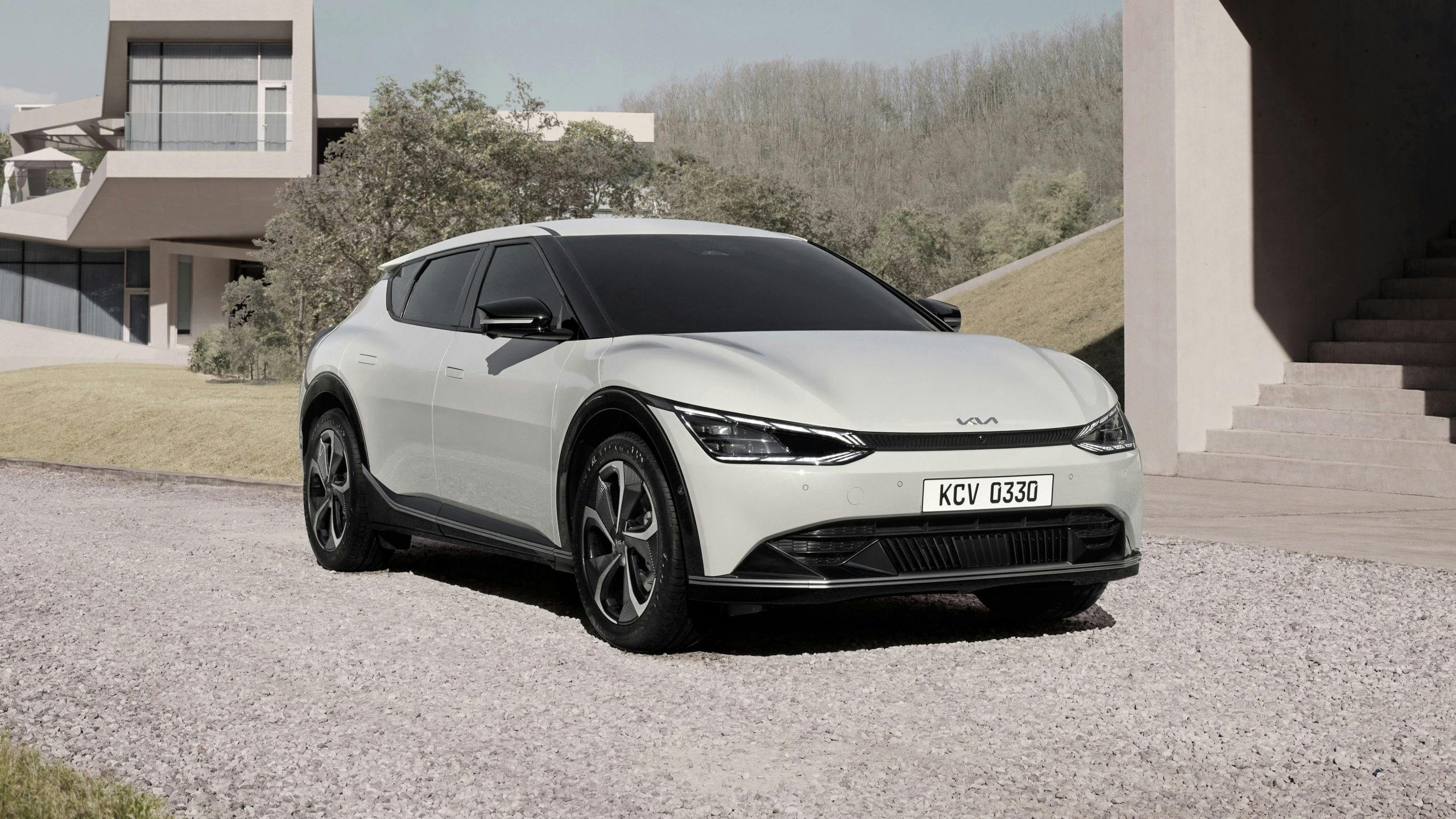The wraps have officially come off the 2022 Kia EV6, the brand’s first dedicated battery-electric vehicle. This is the second vehicle on the Hyundai Motor Group’s EV-specific architecture E-GMP. The EV6 also debuts the brand’s new design language dubbed Opposites United, which is inspired by contrasts found in nature and humanity and will find its way to future Kia vehicles.
“EV6, as the first dedicated Kia EV, is a showcase of human-centered, progressive design and electrified power. We strongly believe EV6 is a compelling and relevant model for the new EV market,” said Karim Habib, Senior Vice President and Head of Kia’s Global Design Center. “With EV6 we aimed to create a distinctive, impactful design by using a combination of sophisticated, high-tech features on pure and rich volumes while providing a unique space as a futuristic EV.”
The 2022 Kia EV6 represents the latest evolution of the brand’s signature look. Kia’s tiger-nose grille has turned into a “digital tiger face” and is complemented by headlights with a sequential pattern. From the side, the EV6’s sweptback coupe-like profile comes into full view, making the car look lower and more aerodynamic. The rear is the most striking part thanks to the full-width taillights consisting of two LED strips and a raked rear window.
Moving inside, the EV6’s interior is simple and minimalistic. A dual-screen layout housed under a single glass panel in the dash is the centerpiece. The center console has been divorced from the dash, providing more storage space. However, it doesn’t look like you can slide the center console forward and back. Kia has also added more haptic feedback buttons for the climate controls instead of physical ones. Fabrics used on the seats are made of recycled plastics.
Kia will reveal more details about the 2022 EV6 before the end of March in a virtual event. Under the skin, we expect it to share the same powertrain options with the Hyundai Ioniq 5. That means your choice of either a 58-kWh or 77.4-kWh (72.6-kWh in other global markets) battery and single- or dual-motor configuration. The latter should offer around 301 hp and 446 lb-ft of torque when paired with the larger battery option.

